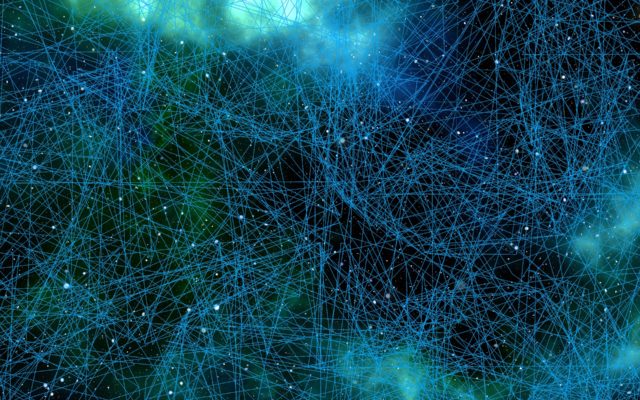All of us are accustomed to the smart wearables, such as the ones we wear on a jogging track. We also have seen the concept of smart homes turn into a reality. We have seen a farmer sort and track his flock of sheep with the help of a mountable RFID device.
Every physical element around us (including ourselves) have become a part of a real and rhythmic whole – communicating information with each other at all times. All thanks to the Internet of Things!
Ever since the Internet of Things (IoT) manifested into reality, integrating the physical world with our digital routine, experts and thought leaders have waited for it to transform the dream of a data driven economy into a witnessed possibility.
As the concept of Internet of Things continues to evolve and grow, it now appears that the wait is finally over.
Welcome to the Industrial Internet of Things (IIoT). This is a concept-turned-reality, which looks set to change the traditional picture of industrial production for years to come.
Industrial Internet of Things – What Is It?
The Industrial Internet of Things or IIoT, is the Internet of Things, applied in industrial settings, which combines operational technology with information technology to help in the optimization of industrial processes and business models.
The communication protocol is same, objective is same—facilitate information sharing to execute better decision making—it’s just that the platform is industrial, when we talk in reference to IIoT.
IoT: Inspiring Innovation Initiatives and Fueling the Realization of a Data Driven Economy
Magnifying into the early traces that the IoT is foot-printing in the context of industrial transformation, the innovation initiatives across different industry-level operating lines can be summarized as follows:
Improved Management Reporting
With manufacturing units now being able to communicate with each other through the deployment of IoT system solutions, analysis of facility performance metrics can be performed in real time. Management executives, if they want, can also resolve the performance monitoring to shop floor levels, which helps provide revealing manufacturing insights.
This leads to improved management reporting.
Serving as an example is the manufacturing giant, Caterpillar. The company has deployed the SAP Leonardo system, an IIoT technology, across all its operation facilities. The system furnishes real time information about manufacturing data, energy utilization data, machine performances, and data regarding the production consumables. Combining altogether, the company executives can have a 360-degree view of the manufacturing processes which leads to better tactical decision making.
Improved Operational Efficiencies
For a company, operational efficiency is as important as the production churn. You may have a high production churn, but until or unless your organization is not efficient in its operations, the lack of efficiency will ultimately restrict its growth. IoT has allowed companies to improve its operational efficiency, as information is communicated in real time between different production units.
This transpires into the optimization of processes to achieve operational efficiency.
BASF, a leading chemical products manufacturer, is leveraging the implementation of IoT to achieve efficiency in its operations. Via a deployed IoT cloud, manufacturing units communicate their requirements with a production planning department. When production components are planned and bought according to the needed manufacturing units, investment risk is reduced and advanced planning of production cost is made possible.
Storage facilities communicate with production and supply chain, which helps them to regulate the operations to lower the storage cost, without compromising on customer facilitation. This and much more has allowed BASF to strive for operational excellence.
Improved Failure-Response Time
The IoT is also opening new possibilities in mitigating the risk of operational failures, and improving failure-response time in cases where operations do break down. This has been made possible as the IoT allows machines to exchange information with each other. Depending on the analysis of the information received, automatically create service requests, schedule maintenance, and ensure timely delivery of spare parts that need to be replaced.
This keeps the operations going.
Leading the inspiration in this case is Trenitalia, the primary train operator in Italy. The company has deployed a dynamic management system, powered by the Internet of Things and Big Data analysis. The system continually monitors the health of every train component, depending on which it can schedule timely maintenance protocols. This ensures uninterrupted service operations.
Improved Levels of Customers Service
Customer service is another area where the IoT is helping the employees and management executives. The IoT permits end to end of visibility of real time information across all production lines, which helps optimize the asset utilization of critical resources.
This ensures timely facilitation of customer requests.
The Truck Advisor mobile app, used by Unilever, is a great example in this context. It is a mobile app, which leverages the power of a Cloud Platform, and enables the organization to keep track of its fleet of delivery trucks, without having to get them install an onboard GPS device.
With the help of the app, the company can track the geo-position of each individual truck, monitor the stops and delivery status, accurately predict expected delivery delays, and establish a bi-level communication with the drivers. With such a vast data set available in real time, the company can strategize in parallel to make sure that deliveries to the customers are on time and meet the pre-set requirements.
These, by far, are just scratching the surface of possible application scenarios. But they are enough to support the claim that the IoT is penetrating the possibilities of a data driven economy, and establishing a strong foundation for it with new applications and unprecedented results.
Article by channel:
Everything you need to know about Digital Transformation
The best articles, news and events direct to your inbox
Read more articles tagged: Featured, Internet of Things








